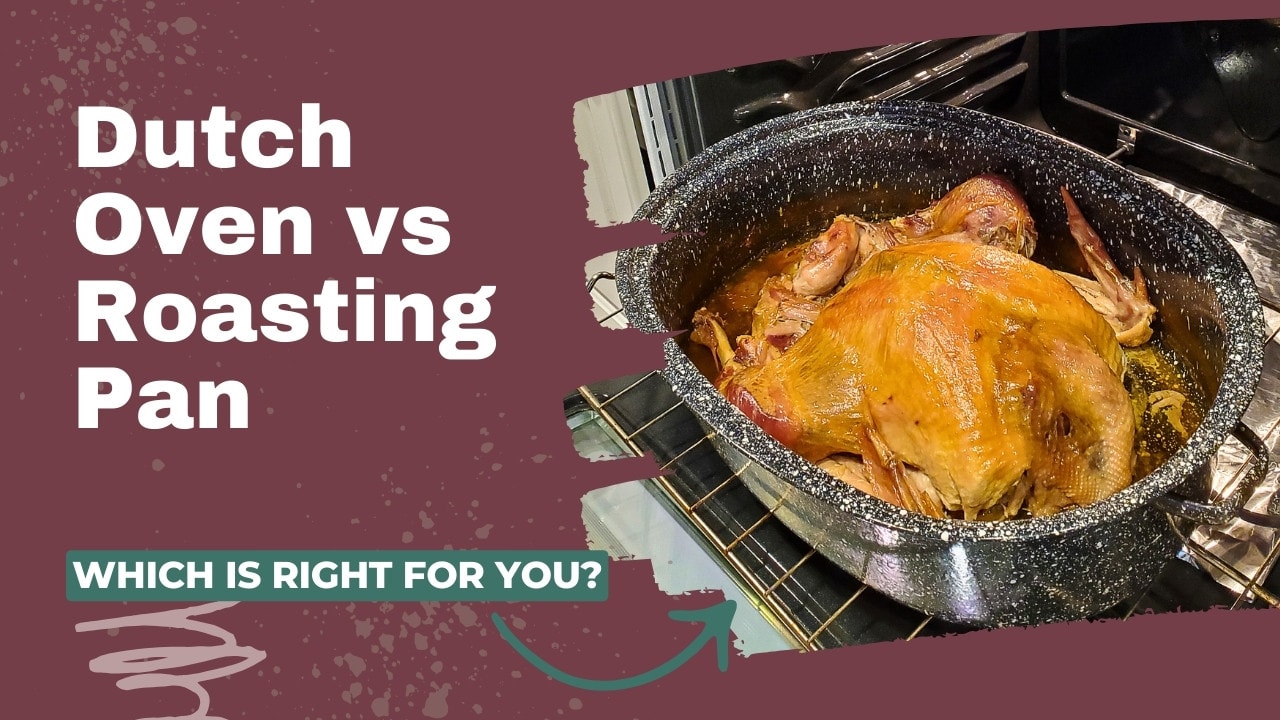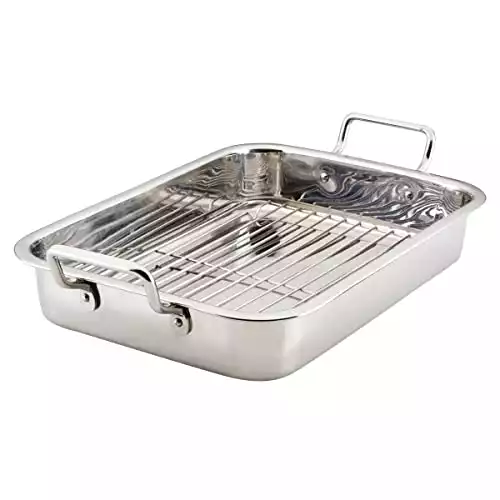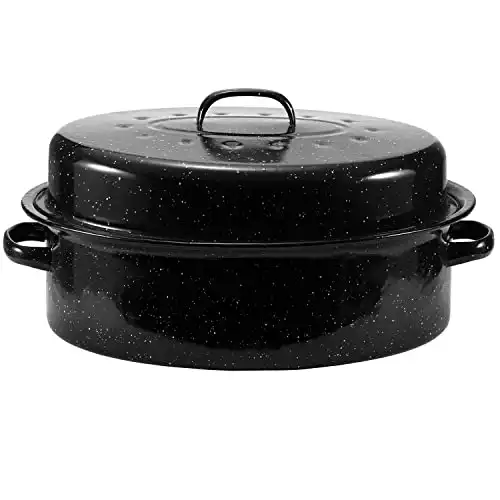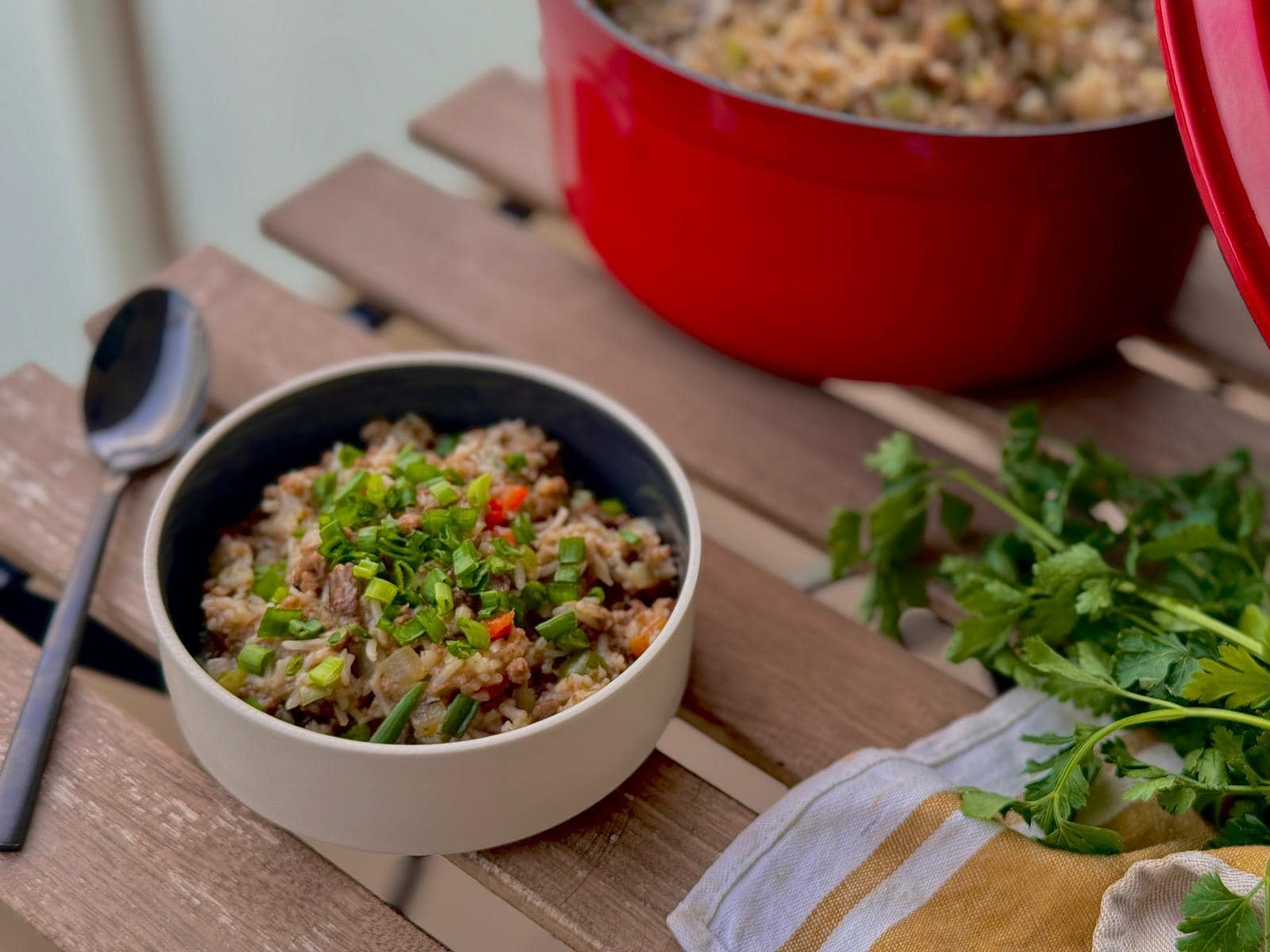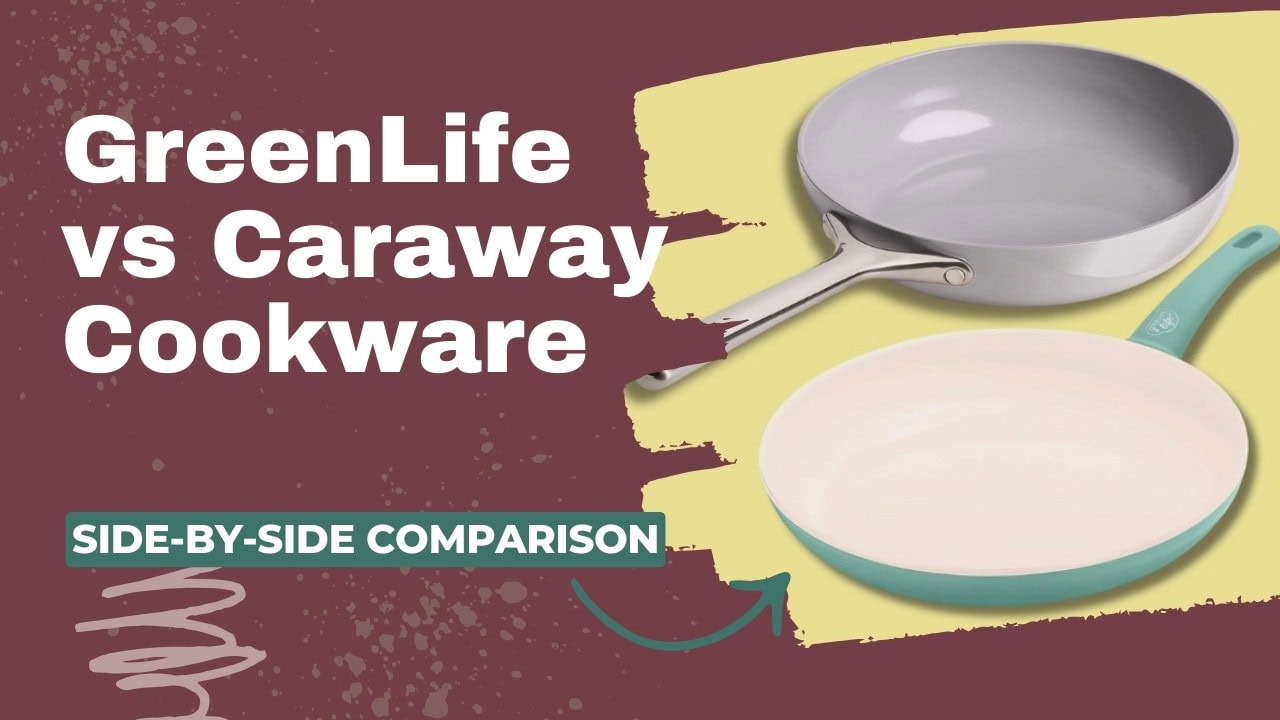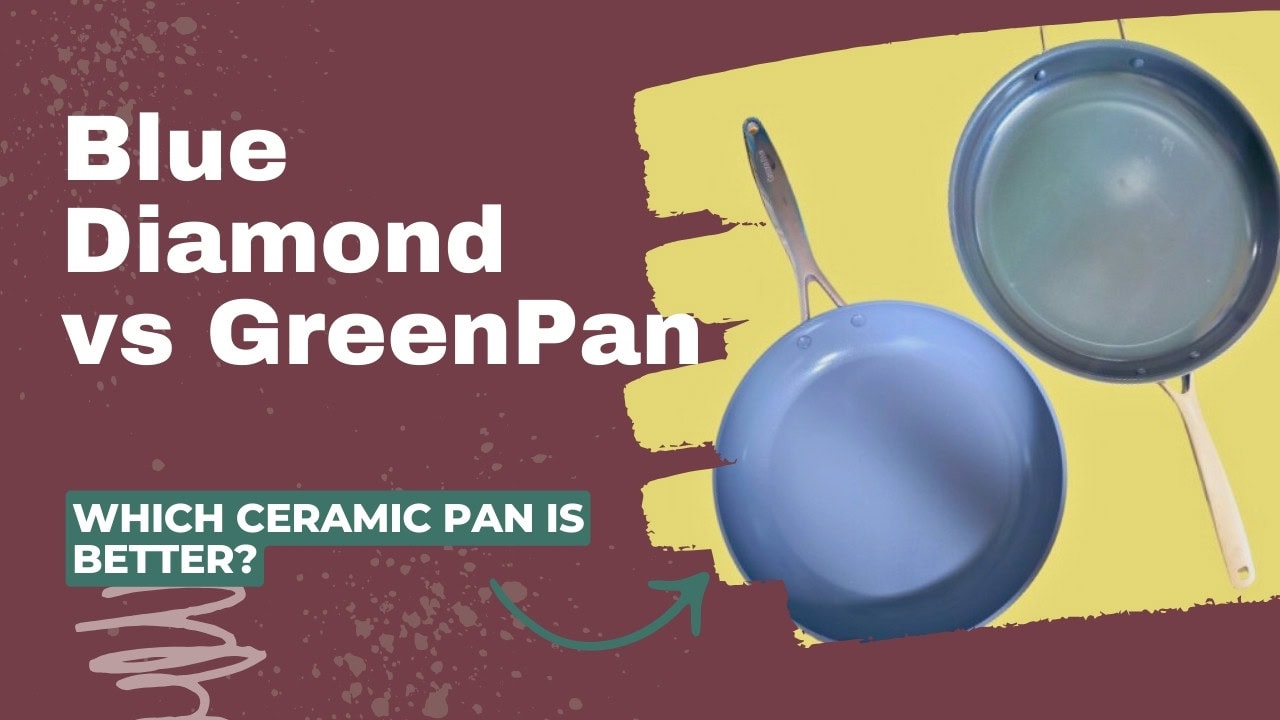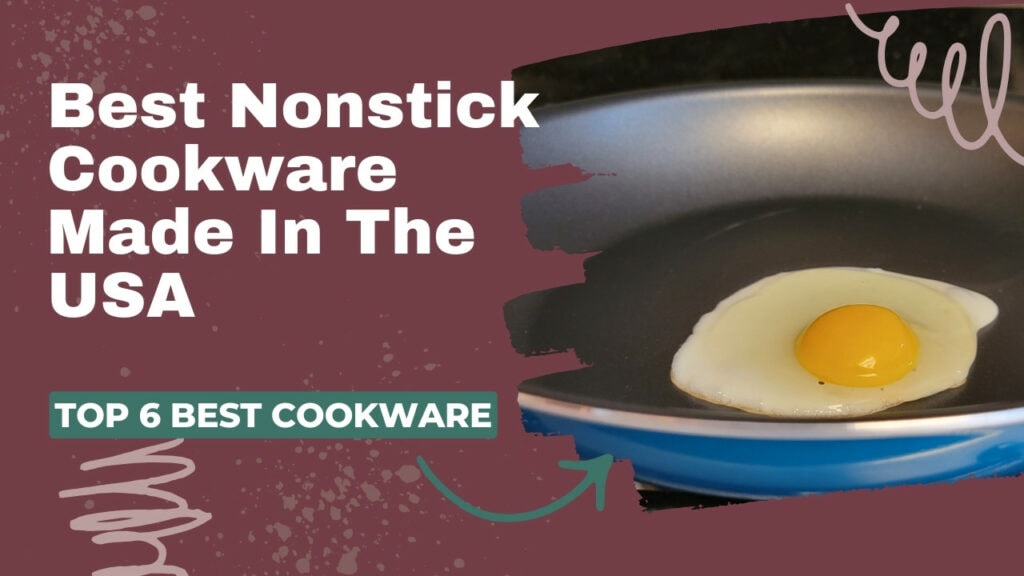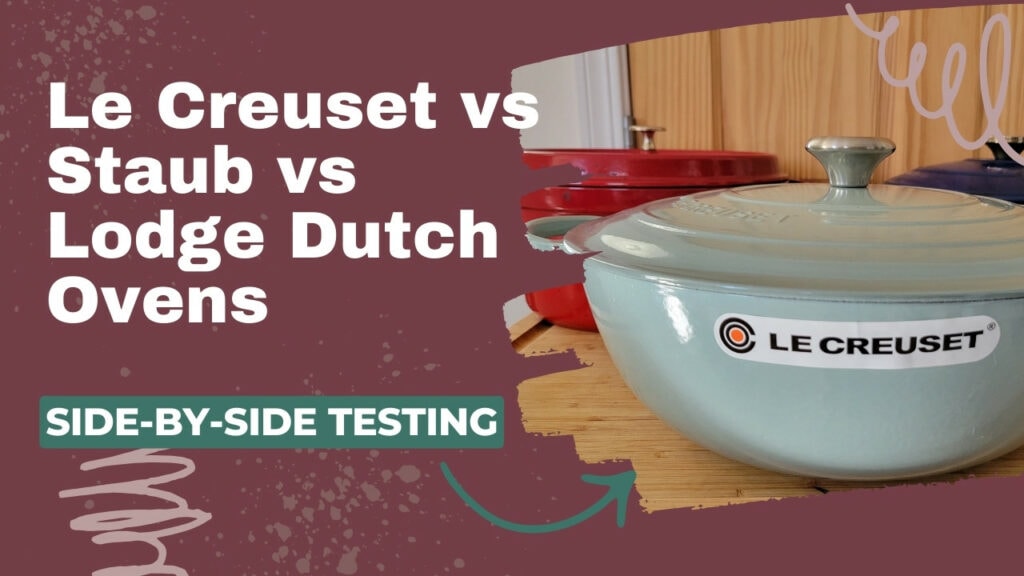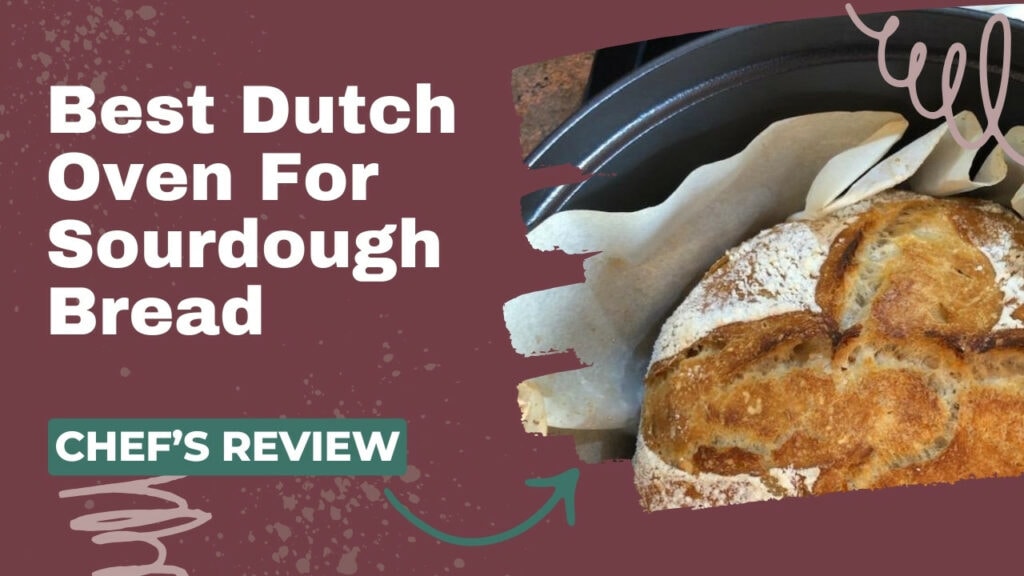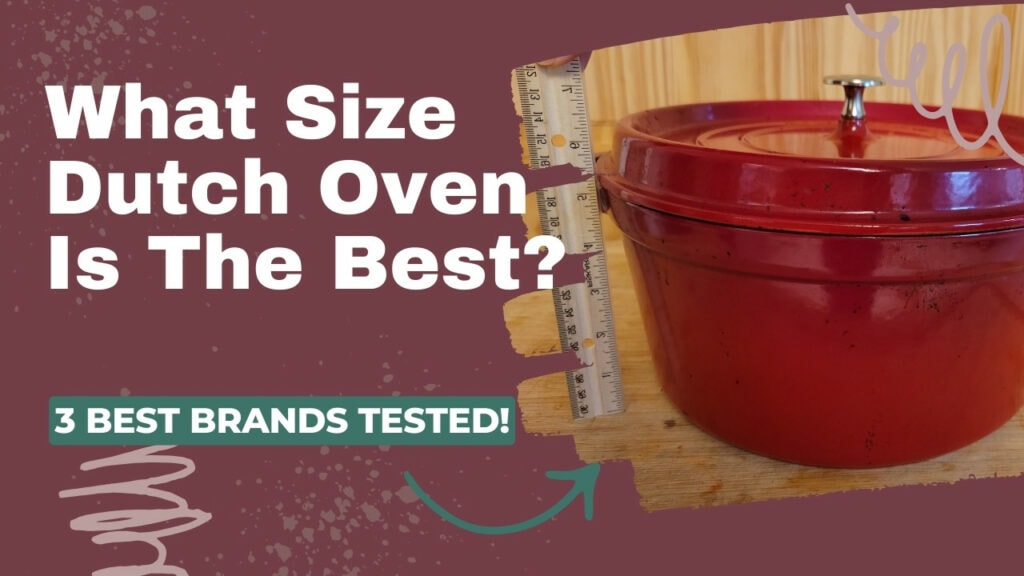I love ending the weekend with a great roast. But a nice piece of meat is an investment, so I want to use the right pan for the job! Sometimes I’ll reach for my Dutch oven, and sometimes I’ll reach for a roasting pan. The choice to use a Dutch oven vs a roasting pan depends on the cut and texture of the meat I want to cook and the final result I’m going for.
So what’s the difference between a roasting pan and a Dutch oven? Do you really need both? And how can you use them to their best advantage?
Here, I’m going to go through all the key differences between these two pans and how they can be used for various dishes.
What’s the Difference Between a Roasting Pan and a Dutch Oven?
Dutch ovens are generally heavy, high-sided pots made from cast iron that may or may not be enameled. They are best for roasting, braising, baking bread, and casseroles. Roasting pans have low sides and are commonly made from stainless steel or aluminum. They are ideal for roasts and sheet-pan meals since they don’t hold as much moisture.
| Dutch Oven | Roaster | |
|---|---|---|
| Typical Size | 3-7 quarts | 10”-12” x 12-16” |
| Height of Sides | 3-4” | 2-3” |
| Typical Weight | 12-15 pounds | 6-8 pounds |
| Material | Cast iron. Enameled cast iron | Stainless steel. Aluminum. |
| Shape | Round or oval | Oval with lid or rectangle with no lid |
| Uses | ✅ Casseroles. ✅ Stews. ✅ Braising roasts. ✅ Baking bread. | ✅ Dry roasting meats. ✅ Potatoes. ✅ Veggies. ✅ Sheet-pan meals. |
| Cost | Expensive | Affordable |
| Longevity | Excellent | Good |
1. Material
Dutch ovens can be made from a variety of materials, but the best options are usually made from heavier materials like cast iron, enameled cast iron, or ceramic. These materials are slow heating, but they have amazing heat retention. They have heavy lids that trap heat and moisture, leading to wonderful and fast-cooking stews. But, if used with the lid, they can steam meat instead of roasting it.
Roasting pans are made from significantly lighter and thinner stainless steel or aluminum. Some brands offer nonstick or enameled versions for easy cleanup. These pans heat quickly, but they also lose heat rapidly – especially if used without a lid. They are great for roasting veggies or crisping fries – in other words, for dishes that you want to release a lot of moisture. They also allow slow, dry roasting of meats without steaming.
The Farberware Classic Traditions Stainless Roasting Pan is a kitchen workhorse. Durable stainless steel construction ensures years of reliable roasting. The included rack elevates meat for even cooking and delicious gravy-making. Wide handles offer a secure grip, and the mirror-polished finish looks great on the table. Plus, it's dishwasher safe for easy cleanup!
2. Size and Shape
Dutch ovens are either round or oval-shaped with high sides and a heavy, tight-fitting lid.
They are measured by quart capacity, typically ranging from 3 to 7 quarts. (But they can get much larger.)
Roasters can be square, oval, or rectangular, and they have the option of adding a roasting rack that helps the heats move around the whole roast evenly. Some turkey roasters have a v-shaped channel in the bottom to catch juices. They are usually measured by dimensions; for example, 12” x 14”.
There are two options for roasters: open or closed. An open roasting pan is great for browning and doesn’t limit the size of the roast it can contain. A roasting pan with a lid can trap moisture for a juicier result and prevent browning from happening too quickly, but it restricts the size of your roasts.
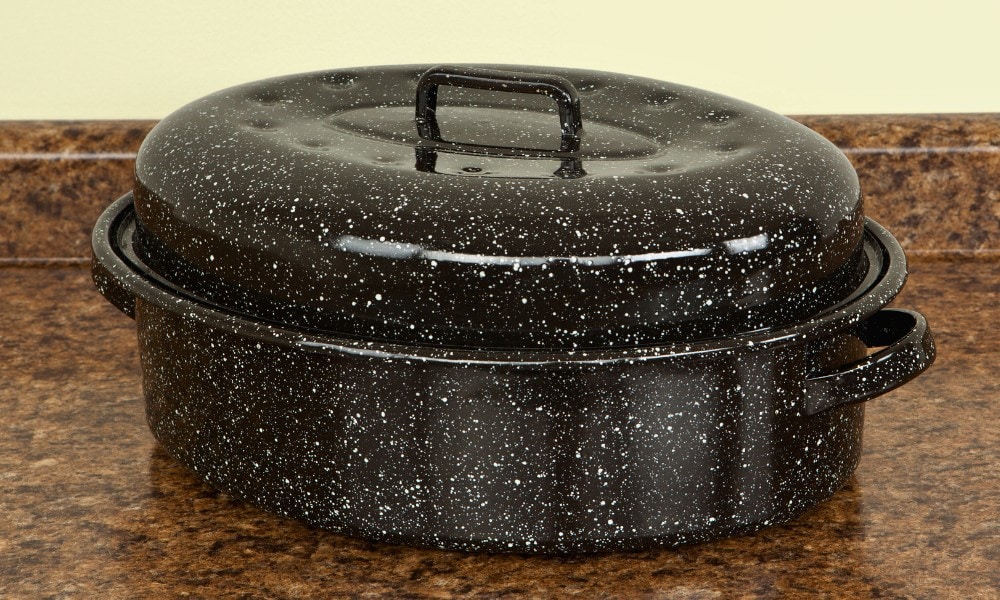
3. Cost
There’s no getting around it; Dutch ovens are very expensive! It’s also key that you buy enamel cast iron Dutch ovens from reputable brands to ensure you get a long-lasting and safe-to-use product. But once you make the investment, the piece will last a lifetime.
Roasters are much cheaper, and there is a lot more brand flexibility. But, since they are so thin, roasting pans can be easily dented or warped if misused or mishandled. Even when treated with care, a roasting pan will eventually need to be replaced.
This roasting pan is perfect for big meals! Its generous size easily holds up to an 18 lb. turkey with the lid on. The natural enamel coating provides nonstick performance and even heat distribution for juicy, flavorful results. It's a breeze to clean thanks to the dishwasher-safe design. This roaster makes a fantastic gift for any home cook, and comes with a satisfaction guarantee.
4. Use
Overall, Dutch ovens are more flexible with how they can be used. They’re perfect for stovetop-to-oven dishes as well as casseroles, soup, stews, bread baking, braising, and roasts.
Roasting pans are designed specifically for roasting meat. Its depth allows for juices to be collected for gravy, but it’s not so deep that it limits the heat circulation around the meat. You can also use a rack fitted to improve heat and air circulation. Roasters are also well suited for sheet pan meals and roasting veggies.
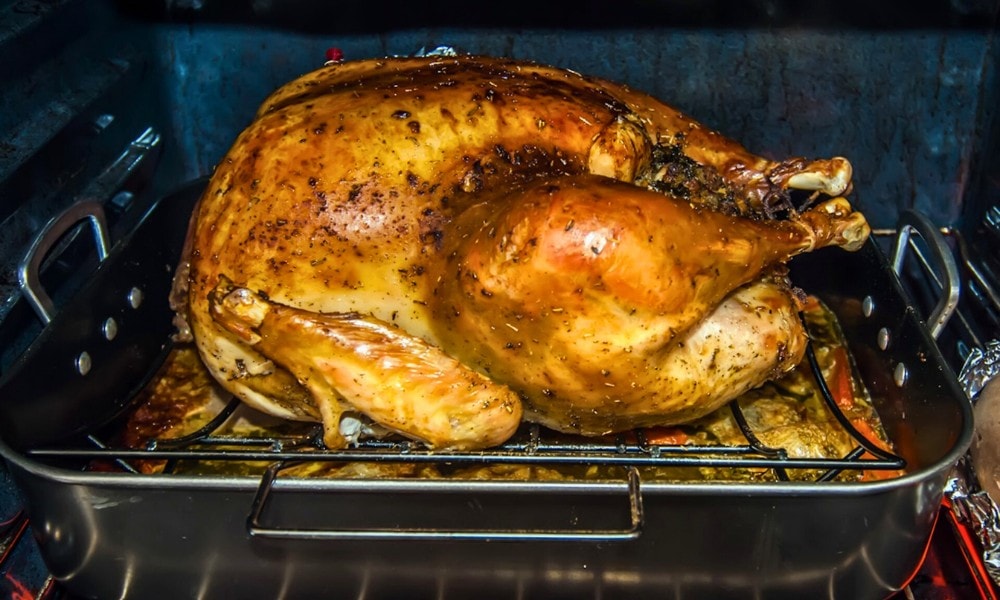
Tip: You can convert recipes for a roasting pan to a Dutch oven if you use the Dutch oven without a lid. But if you use a Dutch oven with a lid, it will cook much faster than the roasting pan will, because it traps steam. The meat or veggies inside will also have a steamed/stewed texture, rather than roasted.
Dutch Oven vs Roasting Pan – Which Is Better?
In a lot of cases, a roaster and a Dutch oven can be used in place of one another in a pinch. Let’s go over a few of these instances and how each of these vessels can be used to make various dishes.
Roasting a Turkey
A roasting pan is my top choice for a roast, especially one as big as a turkey. But a Dutch oven works perfectly fine if you don’t have one.

If switching to a Dutch oven, monitor the turkey temperature closely, and don’t rely on a timer alone to tell you when it’s done. It may take a little longer to cook because of the high sides and slow heating qualities of a Dutch oven. Or it may take less time if the high sides or the lid trap steam. The high sides will also limit how large of a turkey you can roast.
Sheet Pan Meal
Again, the roaster is better suited for a sheet pan meal because it has a wider surface area to evenly spread ingredients. The quick heating of the metal pan will cook up a dish like this in no time.
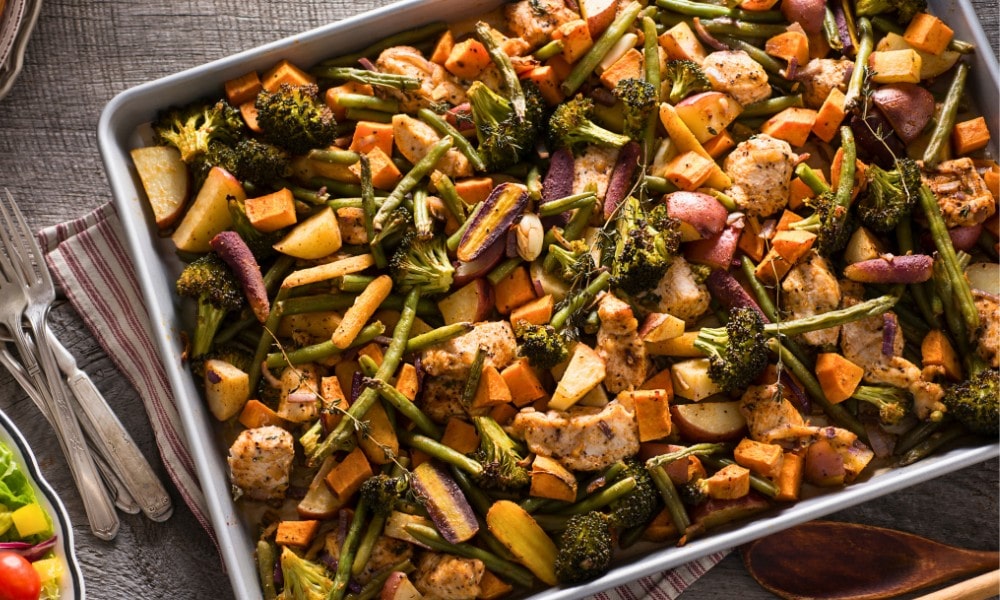
The Dutch oven will work fine for this job, but it will take longer because of the material. They also have less surface area to spread the food out on, which means the ingredients may cook unevenly.
Casseroles
Dutch ovens are perfect for low and slow meals like casseroles because they maintain steady heat over long periods, allowing the whole dish to cook evenly.
I don’t recommend roasters for casseroles because of the thin, fast-heating quality of the material. This can cause your dish to catch and burn on the bottom over an extended period.
Stovetop Stews
Dutch ovens are just as good for stovetop braising and stews as they are in the oven. You can start off by sealing all the ingredients before deglazing with the liquids. Then, you simply pop the lid on and let it simmer away.
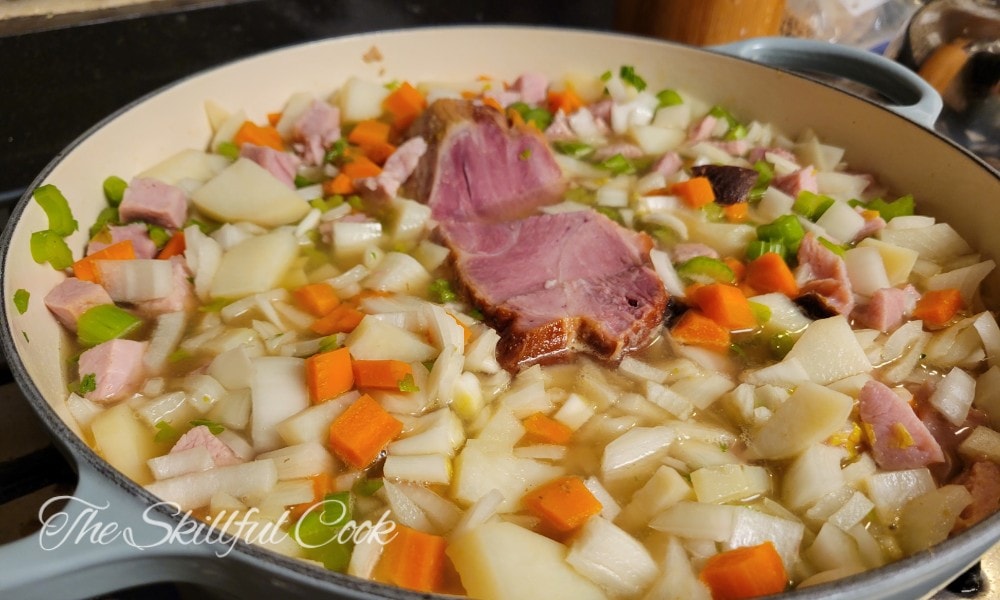
Roasting pans, on the other hand, aren’t usually rated for stovetop use. My Cooks Standard stainless steel roaster said it was stove top safe, but it burned and warped when it tried, so I would reserve this pan for oven dishes only.
Frequently Asked Questions
Which cooks faster – a roasting pan or a Dutch oven?
The same amount of food will cook faster in a long, flat roasting pan than it will in a deep Dutch oven. Roasting pans are thinner, so they come to temperature faster. But a 3-4 pound roast will cook faster in a Dutch oven with the lid on than in a roasting pan with the lid off, because the heavy lid traps heat and steam, driving it into the meat.
Can you cook a chicken in a roasting pan or Dutch oven?
Both of these pans work perfectly for roasting a chicken. The Dutch oven allows you to place the lid on for some of the cooking time to create a moist environment. The roaster is designed to give excellent airflow around the bird and create a crispy skin.
What’s the difference between a sheet pan and a roasting pan?
Sheet pans and roasting pans are often made from the same materials, but they have significant differences. Roasting pans have higher sides (2-3” high) to enable them to catch the juices from the roast and accommodate a roasting rack. Sheet pans have a larger surface area and much lower sides (½” to 1”).
Can you use a turkey roaster as a Dutch oven?
You can cook most recipes for a Dutch oven in a turkey roaster – but you can’t expect the same results. If you’re looking to bake bread, braise, or slow cook for long periods, then the roaster is ill-equipped for this job – especially if it doesn’t have a lid. It takes me about twice as long to cook meat to pull-apart tender in a stainless steel roaster covered with foil as it does in a Dutch oven.
You can totally use a Dutch oven to roast a turkey, though, if you have the right size.
Conclusion
So, now that you have the low down on these two pots, and should be able to use them to their full potential. If you make a lot of roasts, I feel like your home kitchen could benefit from having both of these tools in its arsenal.
Have some questions about something I didn’t cover here? Leave your questions down below, and I’ll answer them as soon as possible.

